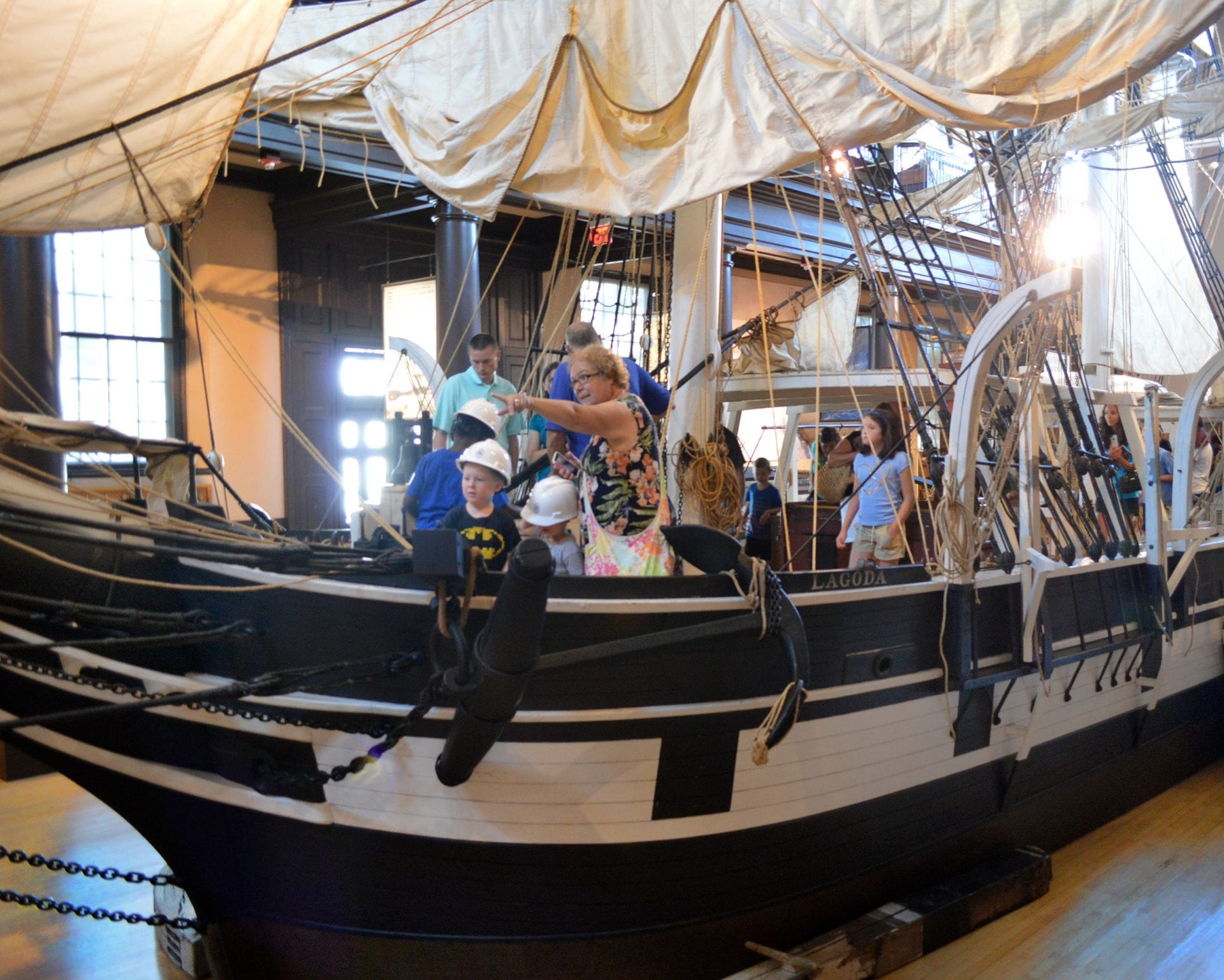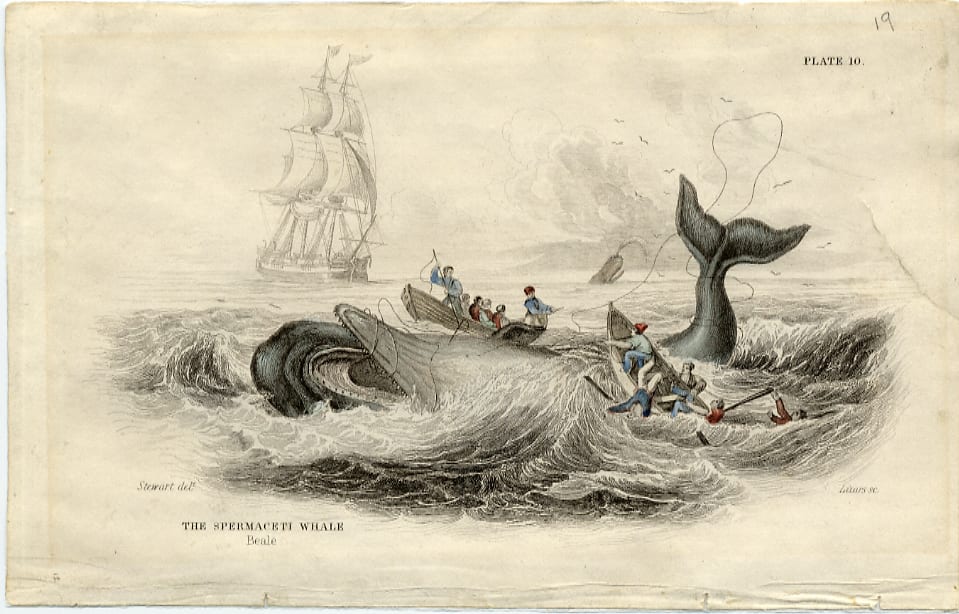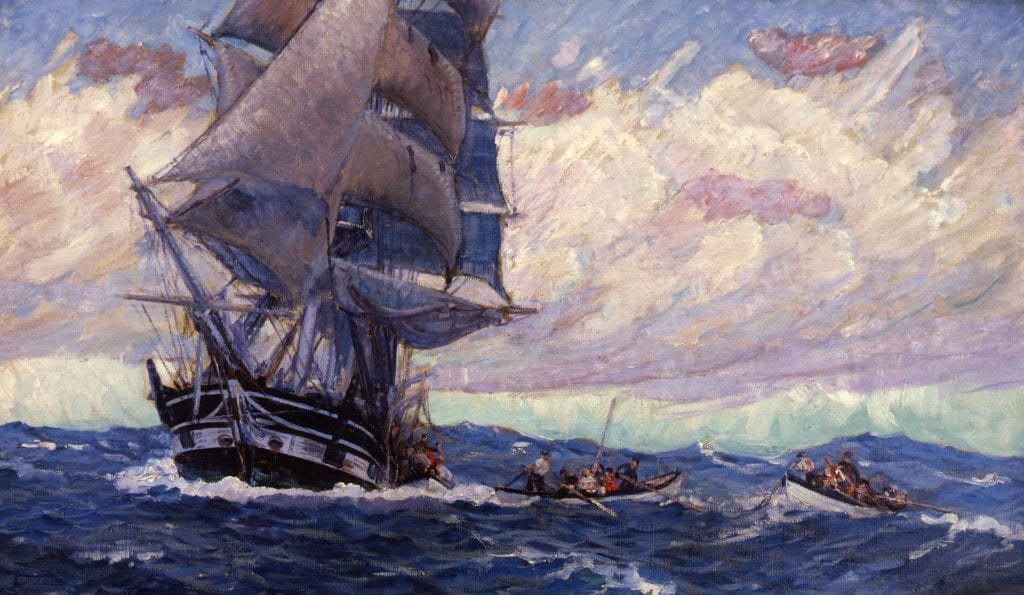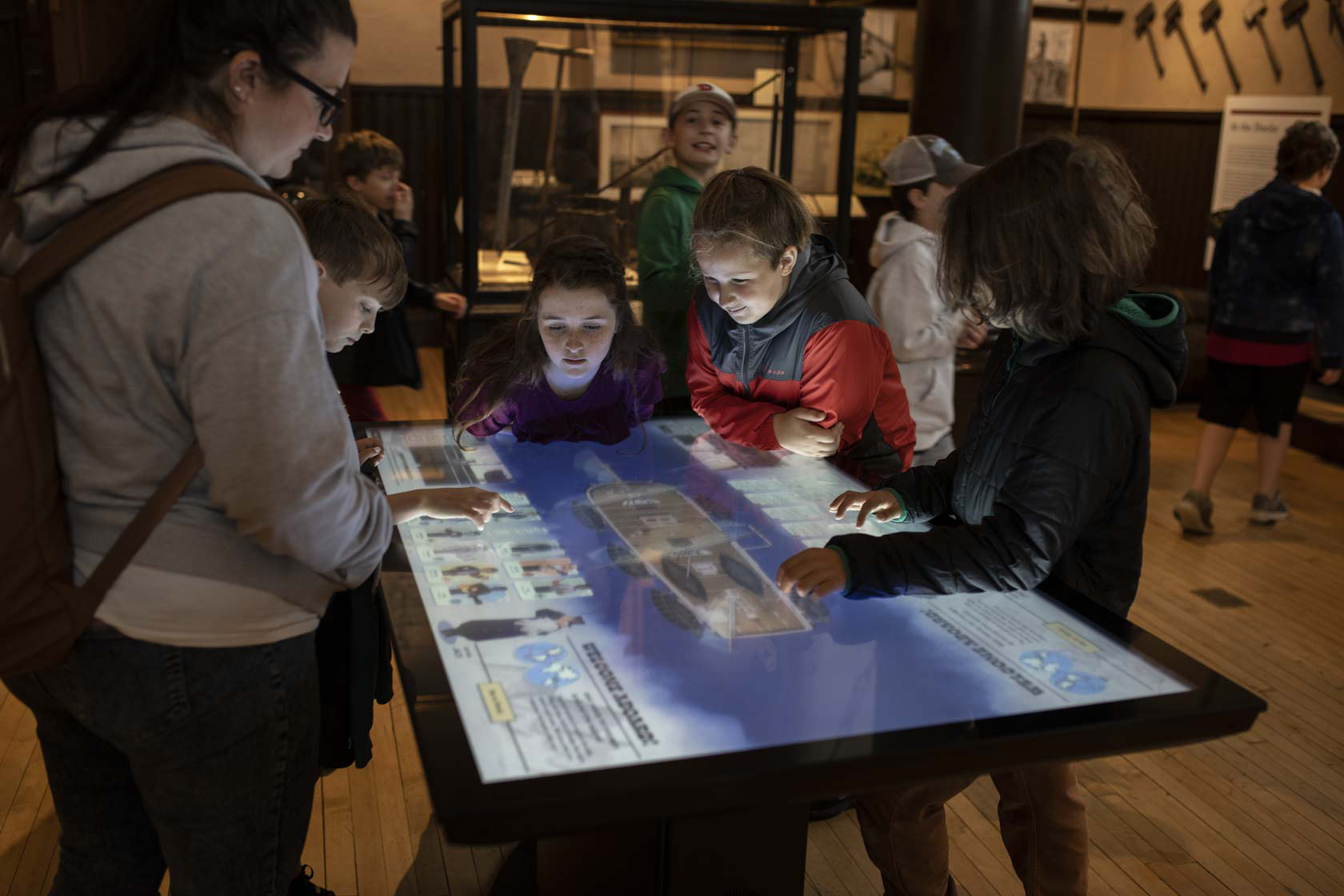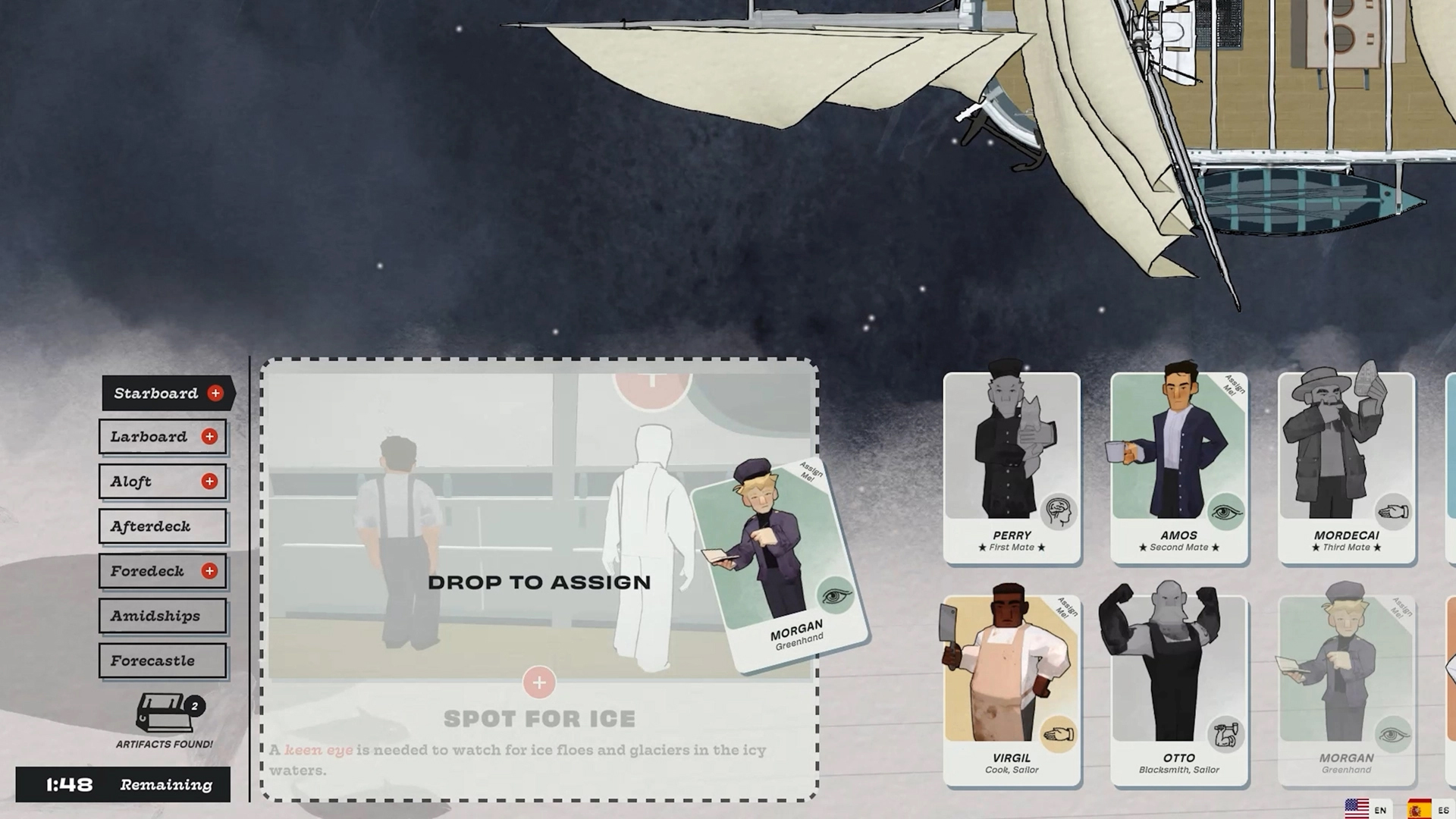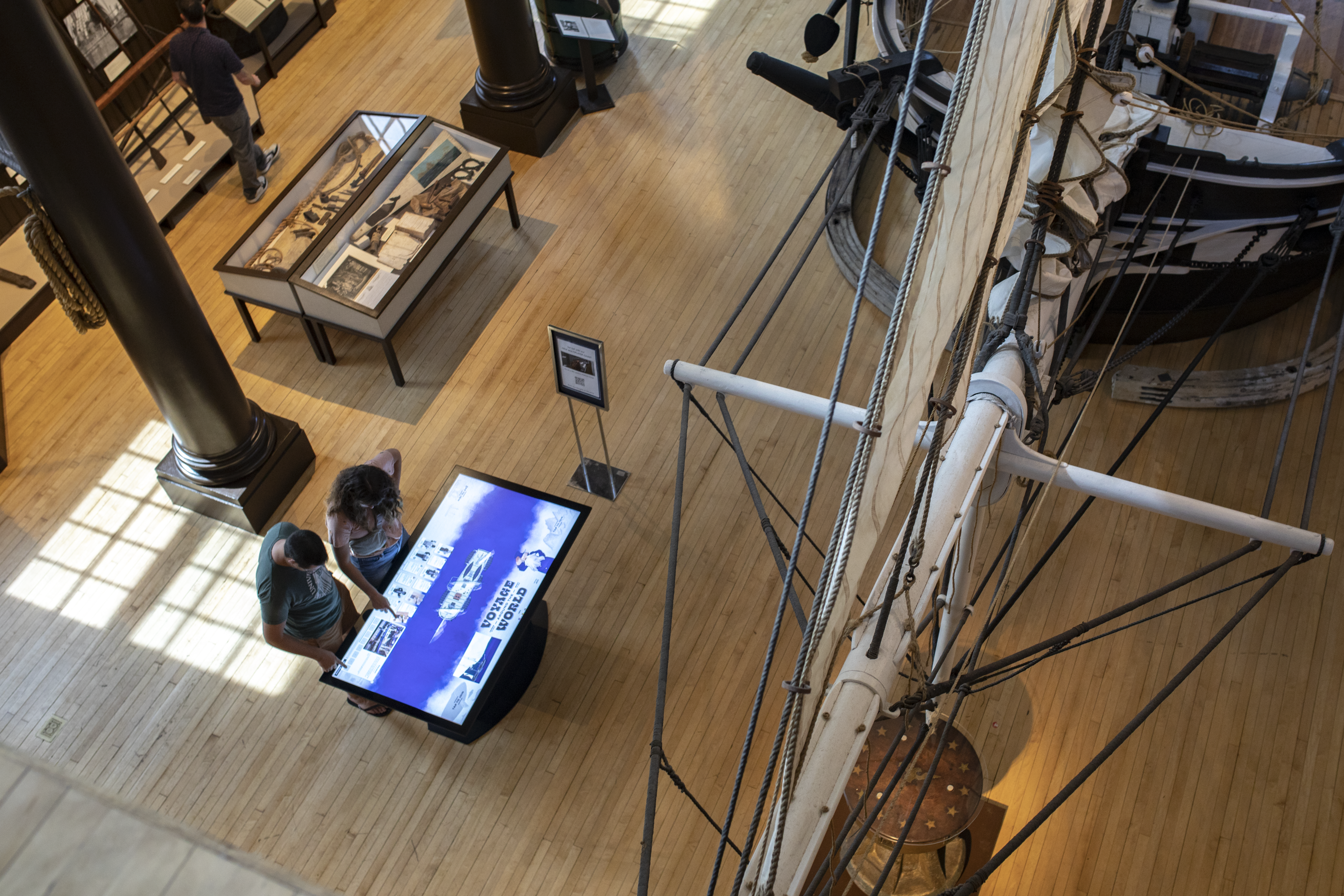Lagoda
Bourne Building
Opened: November 23, 1916
Step aboard the spectacular Lagoda, the New Bedford Whaling Museum’s half-scale model of the whaling bark. Built inside the Bourne Building in 1915-16, with funds donated by Emily Bourne in memory of her father, whaling merchant Jonathan Bourne, Jr., Lagoda is the largest ship model in existence.
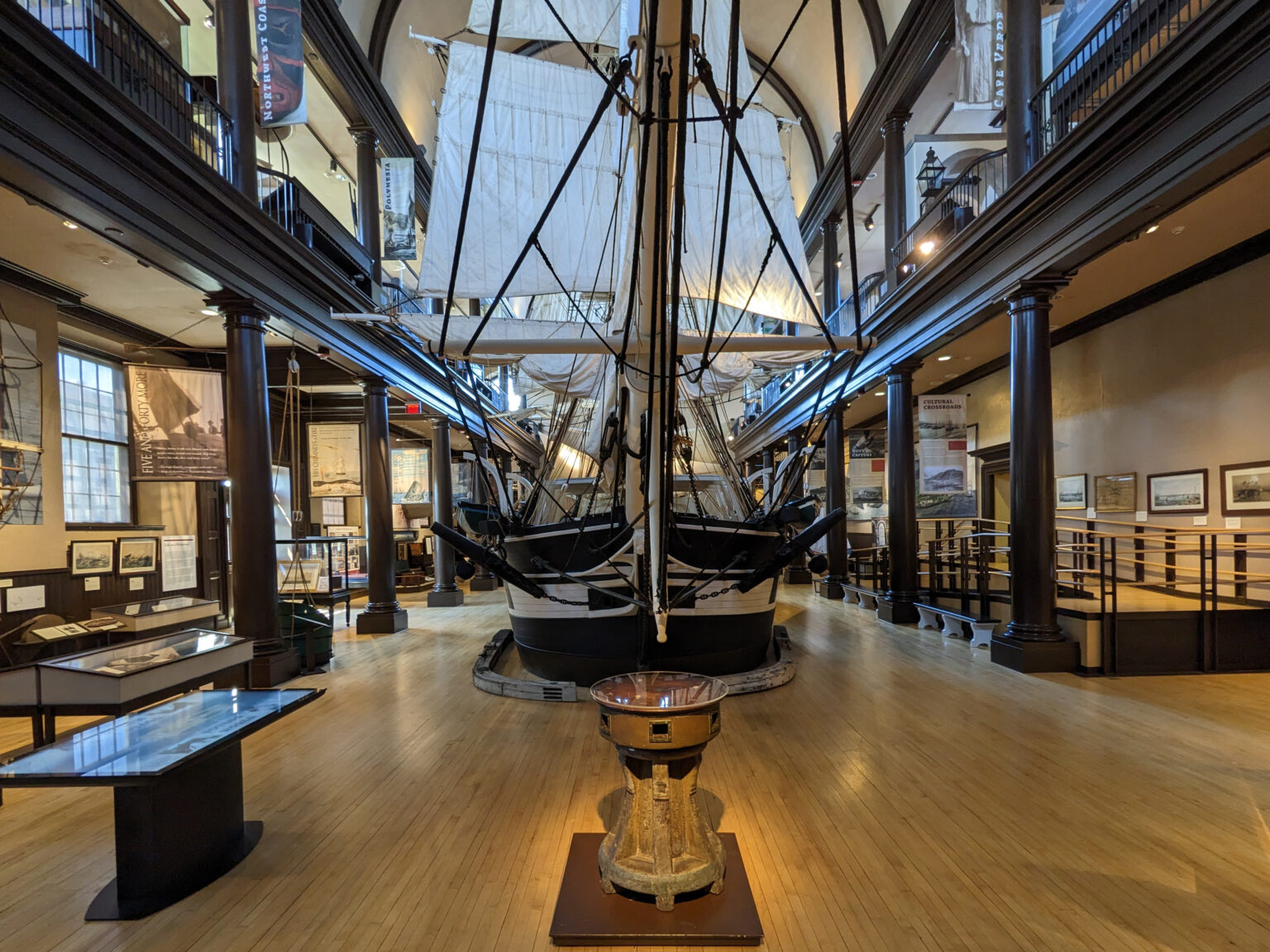
Explore the gallery to learn about the business of whaling, crew, and life on shipboard. Whaling had periods of excitement upon which this mystique has formed. Processing the blubber of a single whale took one to three days. Cutting spades, blubber hooks, boarding and mincing knives, pikes, trypots, bailers, strainers, and casks illustrate the different jobs assigned onboard once a whale was caught. When the hold contained enough full casks of oil the Captain would declare that the vessel had “made a voyage,” and it was time to return to home port. The cargo was off-loaded, tested and graded, and sold. Drawing from the Museum’s immense and unique collections of artifacts and documents, the surrounding exhibitions demonstrate the thrills and dangers of going to sea to do battle with the world’s largest animals.
So you want to “Go a whalin’” do you? Learn what it was really all about.
Voyage around the World
Enjoy our multiplayer interactive: "Voyage Around the World" – a multiplayer gallery game that charges visitors with managing the crew aboard a 19th Century whaleship. Explore treacherous waters, encounter whales, and uncover artifacts. Make important decisions that shape your journey and learn about whaling.
Up to four players collaborate in this touchtable game, working together to complete 15 sailing challenges. Players delve into the crews’ pastimes and backstories as they learn how to best assign them to the tasks on board. Players must share the crew, leading to cooperation, competition, and strategic discussions at the table.
The crew makeup highlights the international nature of the Yankee Whaling industry, featuring characters from all corners of the map. Whether sailing for fortune, freedom, or family back home, the crew have unique motivations for joining the voyage. Each character possesses a skill that aids in certain tasks, such as spotting whales or hauling heavy equipment.
Please participate in our user survey, tell us about your experience. Set sail and have fun on this unique adventure!
Grand Panorama of a Whaling Voyage 'Round the World
Finally, explore how every-day Americans learned about whales and whaling through popular entertainment, traveling exhibits, worlds fairs, and visual culture. Sit in the small theater and watch the digital projection of our 1,275-foot-long panorama painted by Benjamin Russell and Caleb Purrington in 1848. The Grand Panorama of a Whaling Voyage 'Round the World illustrates what Benjamin Russell and other whalers saw as they left the port of New Bedford and traveled the world in search of whales.
Explore the digital version of The Grand Panorama of a Whaling Voyage 'Round the World with expanded access to the history and narratives of Purrington and Russell’s Grand Panorama.
